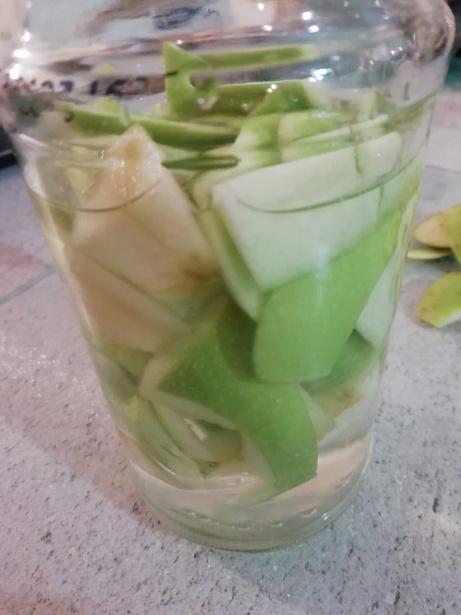
2 minute read
Joanna's Stinging Nettle Soup
There is nothing more satisfying rather than having a nutritious soup with ingredients that you foraged for yourself. Stinging nettle soup is a fantastic addition to the menu for everyone who would like to boost their iron level or add some nutrients into their diet. Nettles have been used as a natural remedy in many cultures for thousands of years to help detoxify the body, regulate hormones, act as an antiinflammatory, help with circulation and allergies. Best foraged as young shoots late Feb to early June, and only picking the top few sets of leaves.
Ingredients:
Advertisement
2 l of vegetable stock
1 leek
1 medium onion
2 medium carrots (roughly chopped)
3-4 medium potatoes (roughly chopped)
3 tbs of cooking oil
15-20 fresh nettle tops
Sour cream or crème fraiche
Salt and pepper
Method:
*Dice the onion and gently fry it on the cooking oil in the pan.
*Once the onion is soft, add the rest of the vegetables
*Cook for about 15 mins until the potatoes’ chunks are soft
*While it’s cooking chop your nettles (you can quickly steam them or pour boiling water over before, so they lose their stinging power)
*Add nettles and boil for a couple of minutes.
*Blend the soup and add salt and pepper to taste.
*Serve on its own or add a dollop of cream.
Yve's Apple Vinegar
Apple season! Once a year apples grow all over the place, if you can find your local apple trees you can pick many. But what about the bits of the apple you don't use for your crumbles or apple sauces? Here's an idea to minimise waste and maximise what you get from each apple. You can do this with apples bought from the shop too.
Method:
1.
Peel and core the apples. Use in your favourite recipe or try the Cider Apple Cake on page 23.
2. Keep the peels and cores. I remove stalks, pips and damaged bits.

3. Put in a glass container and add a little sugar and cover with water.

4. Leave space at the top.
5. Cover with a cloth to keep it clean and tie string or put an elastic band around the rim.

6. Place in a dish and leave on the kitchen worktop or somewhere at room temperature.
7. Stir daily (it is best to use something that is not made of metal, a chopstick works well) for about 2 - 3 weeks or until there are no bubbles.
8. Strain to remove the apple and return to the cleaned jar with the cloth over the top and leave for another 3 - 4 weeks without stirring.

9. When it smells like vinegar, it is vinegar. Pour into a bottle and add to your recipes, use for cleaning or look for the 1001 other ways to use it. Try the Internet or your library.
Notes: Make sure all your equipment is really clean. If it smells funky something has gone wrong. Throw it out and try again. You may see a layer of something jelly like floating on top. This is a sign of a good vinegar!

Tip: Try using other fruits or flowers!
Haveyoubrowsedthepages?Didyoureadeveryword?Ordid youskipstraighttotheback?
Todo:
Therearelotsofspacesleftforyoutonoteanychangesasyou personalisetherecipes–ortowriteyourownrecipesfrom scratch.Notedownrecipesthathavebeensharedwithyou.
Itcanbehelpful,whensharingrecipesandideastomakeanote ofthepersonwhoshareditwithyouanditsgreattolookbackon inthefuture.
Andallthatremainsistogivesomethingago,learnfromyour successesandfailures,andtosharewithothers.
Goonthen,whatareyouwaitingfor?
-Yve(CommunityFoodResearcher)
Ifyouareinterestedtofindoutmoreaboutthecommunityfood researchersinWhitleigh,givefeedbackontherecipesorbook,or collaboratewithus,pleasecheckout: https://foodplymouth.org/project/foodsequal/ orcontactfoodsequal@plymouth.ac.uk
With sincere thanks to those who contributed recipes: Laura Dunn, Joanna Ruminska, Holly, Brenda, Gillian, Paula, Ian, Guinivere and Juliet
The event was created and delivered by Mel, Yve and Julia with the support of the FoodSEqual Team: Hannah, Louise, and Lisa



